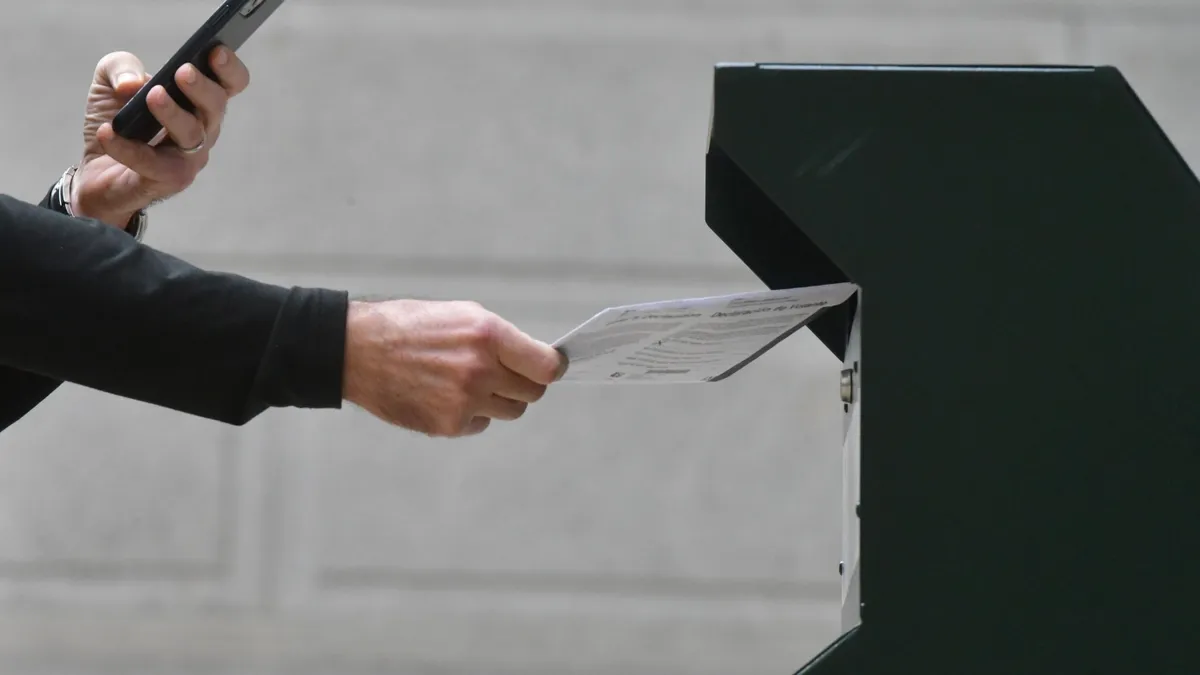
On Monday, President Donald Trump made a significant announcement via his social media platform, Truth Social, revealing his intention to spearhead a movement aimed at abolishing mail-in ballots and certain voting machines in the United States. This initiative comes in anticipation of the upcoming midterm elections scheduled for next year. As part of his strategy, Trump mentioned plans to sign an executive order that would prohibit states from utilizing mail-in ballots and possibly some types of voting machines.
During a meeting with Ukrainian President Volodymyr Zelenskyy at the White House, Trump expressed his belief that voting machines are "highly inaccurate" and asserted that they are more costly and less reliable compared to counting votes via paper ballots. "We're going to start with an executive order that's being written right now by the best lawyers in the country to end mail-in ballots because they're corrupt," Trump stated, urging the Republican Party to take a firm stand against mail-in voting, which he claims the Democrats rely on for electoral success.
Interestingly, Trump himself had previously encouraged his supporters to utilize mail-in ballots ahead of the 2024 presidential election. However, since the 2020 election, there has been a noticeable trend where Democrats are significantly more inclined to vote by mail compared to their Republican counterparts. This disparity has grown as GOP-led states have implemented more stringent regulations concerning mail-in voting.
Despite Trump's ambitious plans, legal experts have pointed out that he lacks the authority to dictate how individual states conduct their elections. According to Michael Morley, a professor at the Florida State University College of Law, the U.S. Constitution grants Congress—not the president—the power to regulate federal elections. "There's really nothing that the executive branch can do on its own in terms of direct mandates," Morley stated. Any alterations to the president's authority would necessitate Congressional action, as emphasized by Richard Hasen, a law professor at UCLA.
Implementing Trump's proposal poses significant logistical challenges, especially with midterm primaries approaching. Matt Germer, director of the right-of-center R Street Institute, noted that any executive order would likely face extensive litigation, delaying its implementation. States would also need to enact new laws or adjust their voting procedures quickly. "Restricting voting by mail would likely force more people to vote in person, necessitating increased resources for in-person voting," Germer explained. This includes finding additional polling locations and training volunteers to manage these sites.
Barbara Smith Warner, executive director of the National Vote at Home Institute, which champions the use of mail-in voting, expressed skepticism about the feasibility of eliminating mail-in ballots within such a tight timeframe. She cautioned that these efforts might be aimed at undermining the integrity of next year’s elections, stating, "Efforts to eliminate this are ignoring the facts and really are just trying to undermine confidence in our elections overall." Warner characterized Trump's actions as a federal overreach into states' rights to manage their own electoral processes.
Hasen further noted that Trump's previous attempts to interfere with elections, particularly in seeking to overturn the results of the 2020 election, set a precedent for potential future actions. He emphasized the need for states, courts, and other stakeholders to prepare adequately to ensure that the elections conducted in 2026 uphold fairness and integrity.
In summary, Trump's declaration to eliminate mail-in ballots and voting machines has sparked significant debate about the legality and practicality of such measures. As the political landscape evolves, the implications of this movement will undoubtedly shape the upcoming midterm elections.